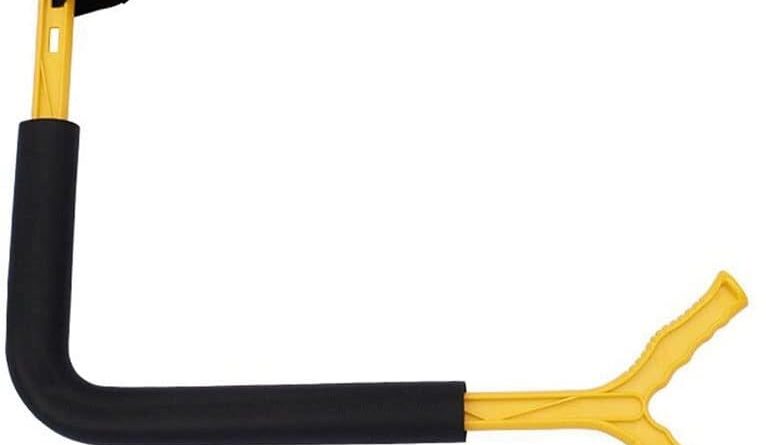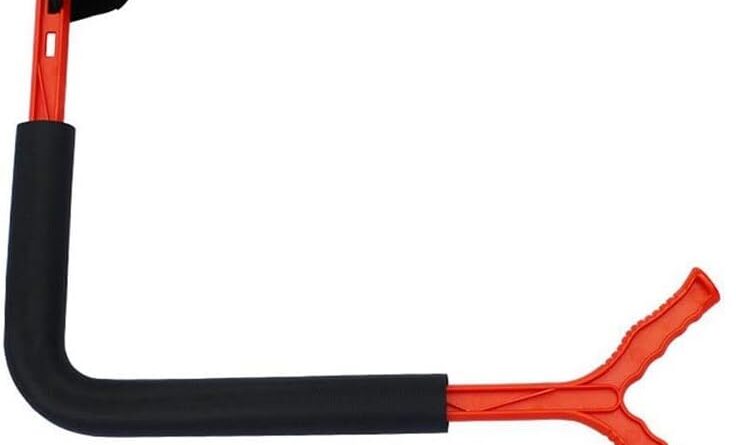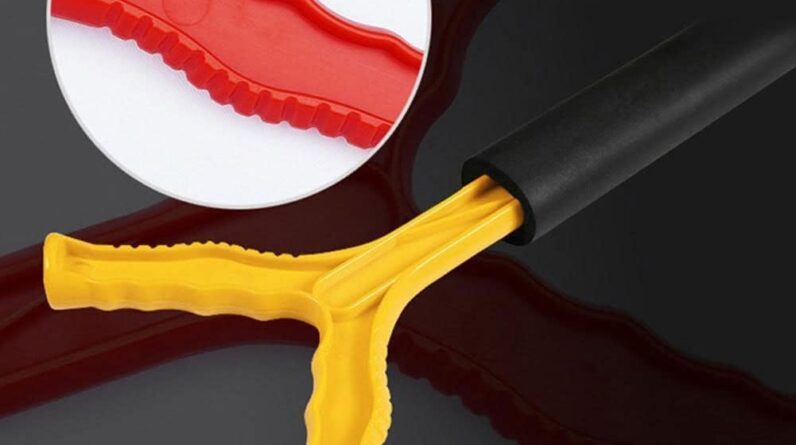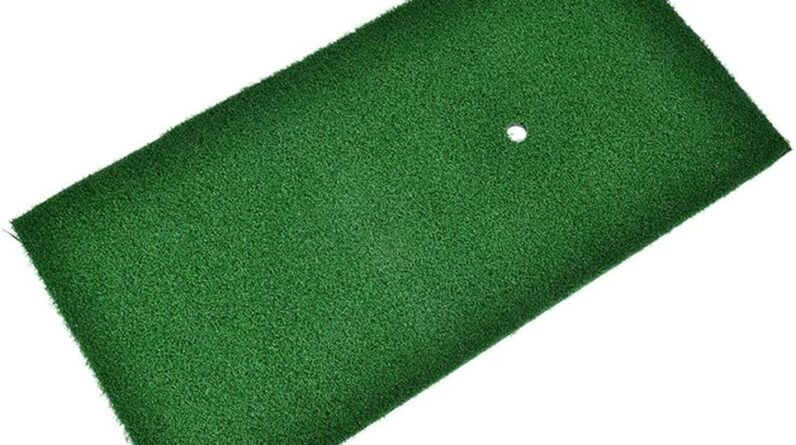Are you new to the world of golf and eager to learn the fundamentals of a proper golf grip? Look no further! In this article, we will unravel the secrets behind achieving a perfect grip that can elevate your golfing game to new heights. Whether you are a beginner or a seasoned player looking to refine your skills, understanding the basics of a proper golf grip is essential. By grasping the club with the right technique, you will gain better control, improved consistency, and ultimately enhance your overall performance on the golf course. So, let’s get started and explore the key elements that make up a solid grip in the wonderful game of golf.
Importance of a Proper Golf Grip
Having a proper golf grip is essential to achieving success and consistency in your golf game. Your grip is the only point of contact between you and the golf club, so it plays a crucial role in determining the accuracy and power of your shots. A correct grip provides stability, control, and allows you to effectively transfer energy from your body to the club, resulting in improved ball striking. Whether you are a beginner or a seasoned golfer, understanding and practicing the fundamentals of a proper golf grip is vital to improving your game.
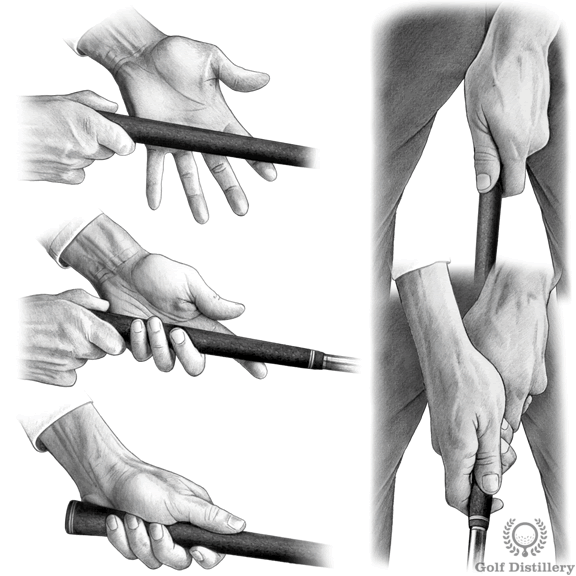
Hand Placement
Before we delve into the different types of grips, it is important to understand the correct hand placement on the golf club. In a proper grip, your lead hand (left hand for right-handed golfers) should be placed on the grip first, with your glove’s grip pad resting against the club, and your thumb pointing slightly to the right of the center of the grip. The grip of the club should run diagonally across the base of your fingers, from the first knuckle of your index finger to the pinky finger. Your trailing hand (right hand for right-handed golfers) should be placed slightly below the lead hand, with the thumb pointing towards your trailing shoulder.

Choosing the Right Golf Grip
There are several different types of grips that golfers can use, and choosing the right one for you can greatly impact your overall performance. The three most common grips are the overlap grip, the interlocking grip, and the baseball grip. Each grip offers its own advantages and disadvantages, so it is important to experiment with each and determine which one feels most comfortable and natural to you.
Overlap Grip
The overlap grip is the most common grip used by professional golfers and is also known as the Vardon grip, named after the famous golfer Harry Vardon. In this grip, the pinky finger of the trailing hand rests on top of the index finger of the lead hand, creating an overlapping grip. This grip provides stability and control and is ideal for golfers with larger hands or those looking for a more connected feel during their swing.
Interlocking Grip
The interlocking grip is another popular grip used by golfers, especially those with smaller hands or shorter fingers. In this grip, the pinky finger of the trailing hand interlocks with the index finger of the lead hand. The interlocking grip provides a secure connection between the hands and can help promote a more unified swinging motion.
Baseball Grip
The baseball grip, also known as the ten-finger grip, is a less common grip used by golfers. In this grip, all ten fingers grip the club similar to how you would grip a baseball bat. The baseball grip offers a larger gripping surface, which can be beneficial for golfers who struggle with hand strength. However, it may not provide the same level of control and stability as the overlap or interlock grips.
Neutral Grip
Regardless of the type of grip you choose, it is important to maintain a neutral grip pressure. Gripping the club too tightly can restrict your wrist movement and negatively impact your swing. On the other hand, gripping the club too loosely can lead to a loss of control and inconsistent shots. Finding the right balance between a firm and relaxed grip is essential for a proper golf grip.
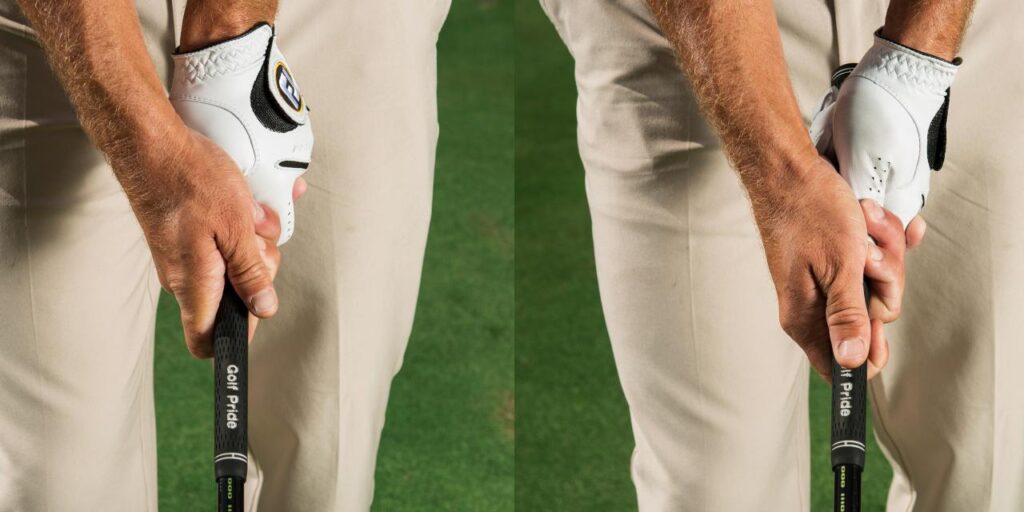
Gripping the Club
Once you have chosen the grip that feels most comfortable to you, it is important to ensure that you are gripping the club correctly. The grip should be held more in the fingers than in the palm of your hands. This allows for better wrist movement and helps maintain a consistent and controlled swing. Avoid gripping the club too tightly, as this can restrict the natural movement of your hands and wrists during the swing. A proper grip should feel secure and balanced, allowing for maximum control and power.

Fingers Placement
Proper finger placement is another crucial aspect of a proper golf grip. The fingers of your lead hand should wrap around the grip, with the pad of your hand resting snugly against the grip. The thumb should be positioned slightly to the right side of the center of the grip, providing stability and control. The fingers of your trailing hand should be wrapped around the grip, with the thumb pointing towards your trailing shoulder. The thumb of the trailing hand should be positioned slightly to the left side of the center of the grip, aligning with the thumb of the lead hand. This positioning helps maintain a unified grip and promotes a synchronized swing.
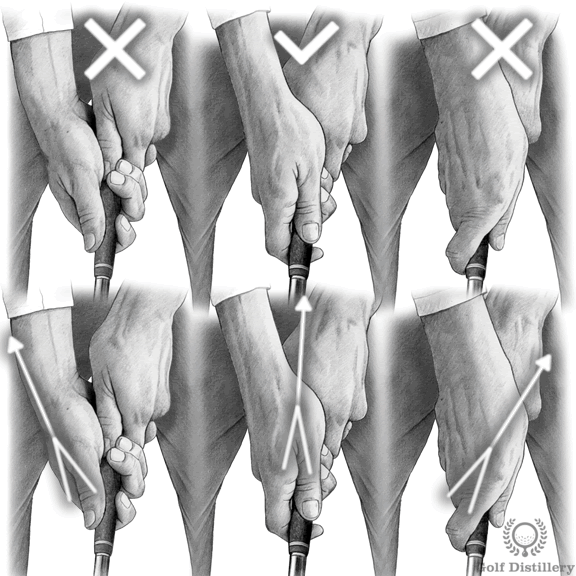
Frequent Practice
Lastly, practicing your grip on a regular basis is essential for developing muscle memory and ensuring consistency in your golf game. Take the time to practice your grip before every round or practice session. Develop a routine where you go through the steps of hand placement, gripping the club correctly, and ensuring proper finger placement. By consistently practicing your grip, you will build the necessary muscle memory to make it second nature, resulting in more consistent and accurate shots on the course.
In conclusion, the importance of a proper golf grip cannot be overstated. It is the foundation upon which every successful golf swing is built. Start by understanding the basics of hand placement and choose the grip that feels most comfortable to you. Experiment with the overlap, interlock, and baseball grips to find which one provides the stability, control, and performance you desire. Remember to maintain a neutral grip pressure, grip the club more in the fingers than the palm, and ensure proper finger placement. Lastly, practice your grip frequently to develop muscle memory and consistency in your swing. By prioritizing your grip and putting in the necessary practice, you will see significant improvements in your golf game.


